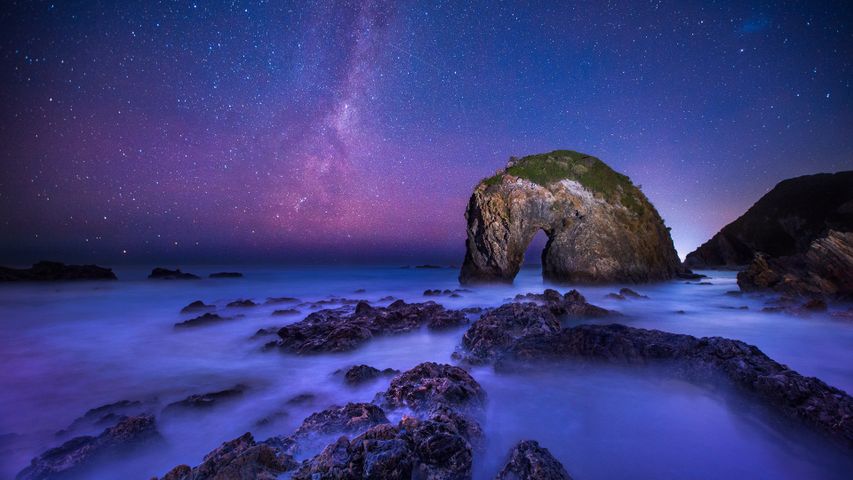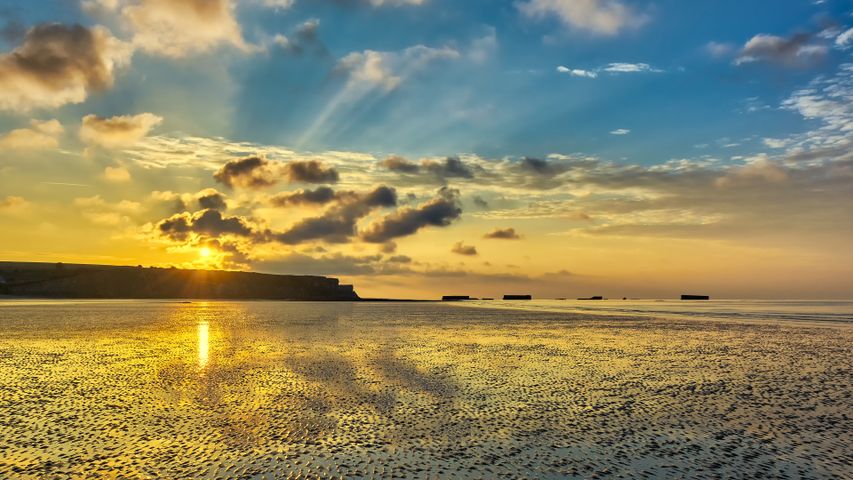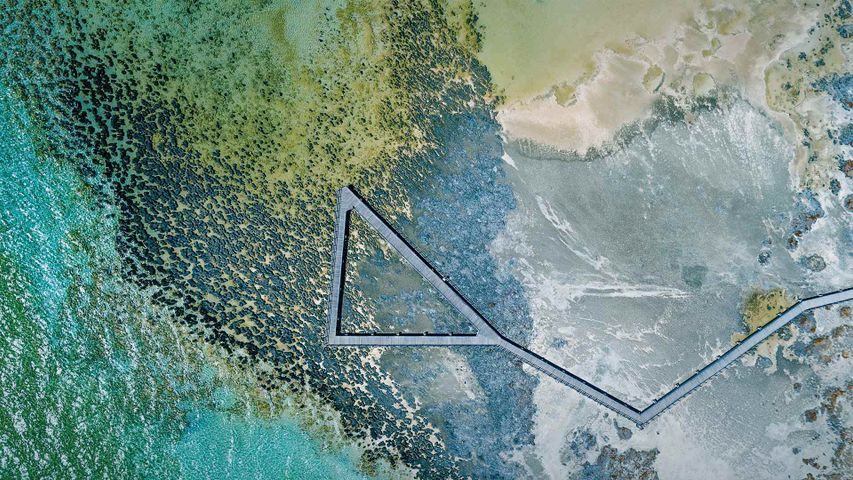Mangrove trees, Walakiri Beach, Sumba Island, Indonesia
© Tengguo Wu/Getty Image
The dancing trees of Sumba Island
On the northern coast of Indonesia's Sumba Island, a stand of mangrove trees appears to dip and sway to summon another sunrise. Walakiri Beach is gently sloped, so it's easy for a visitor to walk out into the knee-deep water to examine the transitional zone - where land meets the sea - of a mangrove ecosystem. Mangroves thrive here, growing in coastal salt water and low-oxygen conditions where other trees would quickly die. Their complex root systems filter out the salt and form a strong natural defence against storm surges, rising sea levels and coastal erosion. They are also home to a huge range of juvenile fish and crustaceans.
But mangroves are disappearing fast, several times faster than forests on land. The United Nations estimates that the world has lost half its mangrove coverage in just the last 40 years. To raise awareness of their importance and the need to find ways to protect them, the UN has declared that 26 July is International Day for the Conservation of the Mangrove Ecosystem. We'll dance to that.
Related Images
Bing Today Images


 Fishing village of Tilting, Fogo Island, Newfoundland and Labrador, Canada
Fishing village of Tilting, Fogo Island, Newfoundland and Labrador, Canada
 Mesquite Flat Sand Dunes in Death Valley National Park, California, United States
Mesquite Flat Sand Dunes in Death Valley National Park, California, United States
 The Milky Way over Horse Head Rock, New South Wales, Australia
The Milky Way over Horse Head Rock, New South Wales, Australia
 Vila Franca Islet, São Miguel Island, Azores, Portugal
Vila Franca Islet, São Miguel Island, Azores, Portugal
 Greater flamingos, Lüderitz, Namibia
Greater flamingos, Lüderitz, Namibia
 Arromanches-les-Bains in Normandy, France
Arromanches-les-Bains in Normandy, France
 Cala Luna beach, Sardinia, Italy
Cala Luna beach, Sardinia, Italy
 Barrier reef off Grande Terre, New Caledonia, France
Barrier reef off Grande Terre, New Caledonia, France



